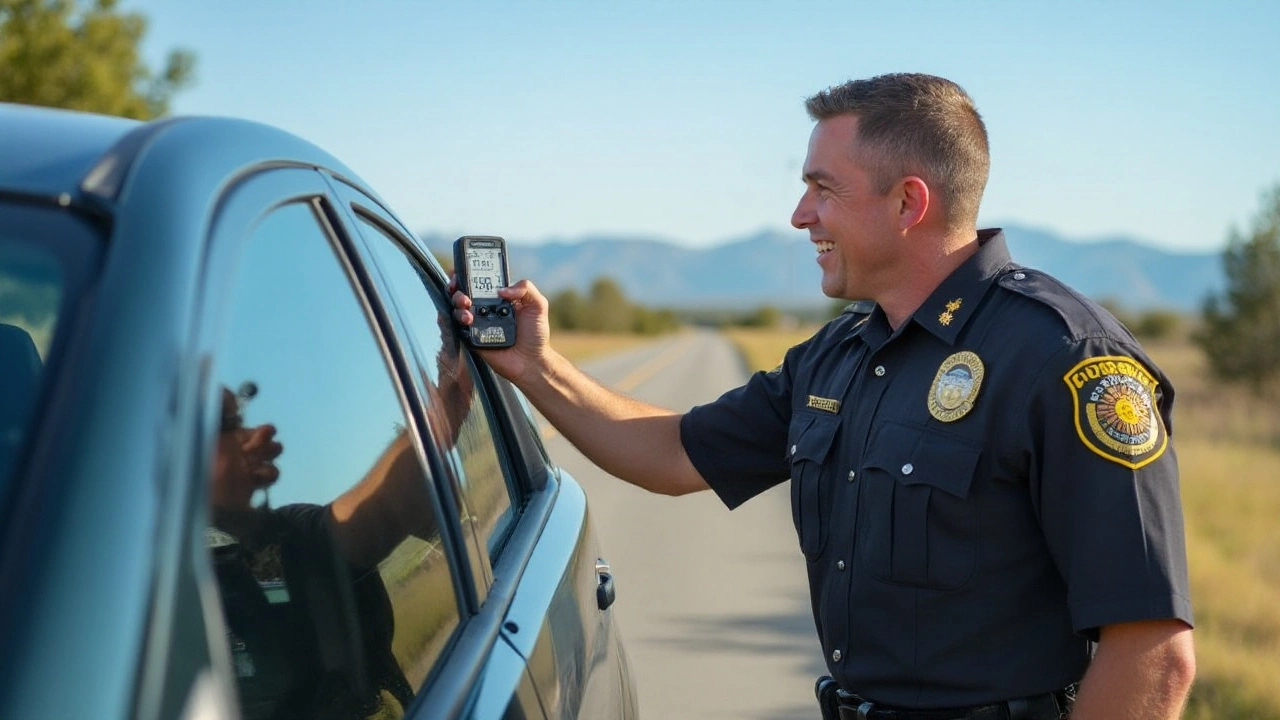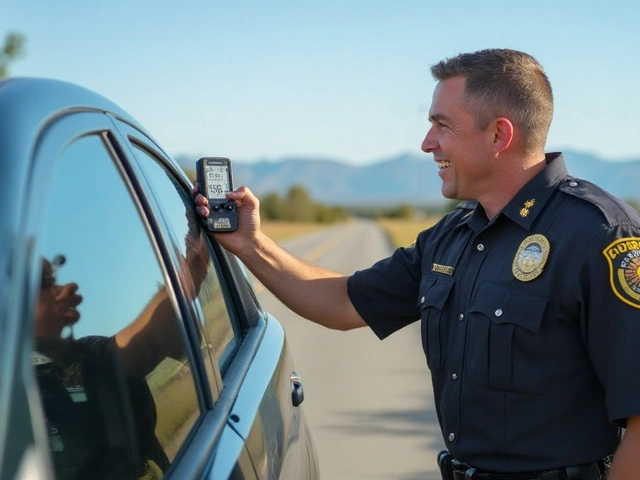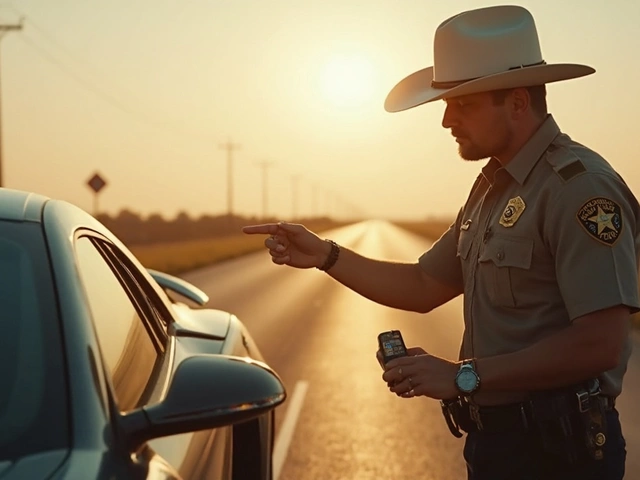When cruising through the scenic roads of Colorado, the sun beaming and mountains in view, the importance of window tinting becomes clear. But, in the midst of enhancing comfort and privacy, it's crucial to tread carefully with state laws. Fines for illegal window tint can catch drivers off guard, making understanding tint regulations essential for anyone looking to modify their vehicle's windows.
Window tinting not only offers respite from the sun but also adds an element of style and security to your vehicle. However, in Colorado, certain limits and regulations must be observed to avoid penalties. In this article, we'll unravel the details of how much a tint ticket could set you back and what you can do to avoid one. Let’s dive into the nuances, ensuring your car remains stylish and within legal bounds.
- Understanding Tint Laws in Colorado
- How Much Could a Tint Ticket Cost?
- Factors Influencing Tint Fines
- Avoiding Tint-Related Penalties
- Tips for Compliant Tinting
Understanding Tint Laws in Colorado
Coloradans often embrace the vast landscapes with their cars, whether headed to the slopes or winding through red rock canyons. However, an important factor to remember when driving with tinted windows is the ever-watchful law. Understanding the tint laws in Colorado is more than just staying adhesion-free; it's about safety, visibility, and maintaining responsible driving practices. Colorado has specific regulations when it comes to window tinting, each made to ensure that the balance between comfort and safety is respected. The state has set permissible percentages for visible light transmission (VLT), which means how much light in a visual spectrum can pass through the glass and film. In Colorado, the front side windows must allow more than 27% of light in, making it illegal to have deeply tinted front windows.
The rear side windows can be darker, as well as the back windshield, which allows for greater privacy and sun protection without compromising the driver's view. This regulation hinges on the understanding that driver-front visibility is crucial in preventing accidents and ensuring encounters at stoplights and crosswalks remain cordial and safe. According to the Colorado State Patrol, "enforcement of our window tinting laws is not only for individual safety but for the collective good." It's also noteworthy that for those vehicles registered as multi-purpose vehicles, the tint allowances may have broader ranges, but clarity in the law helps all keep the ride hassle-free.
This jurisdiction over tint may vary slightly for out-of-state drivers venturing into Colorado; however, local regulations must always be adhered to, maintaining that the safety of all road users is a priority. The science of tinting films has improved, offering UV protection without deep shades that often lead to legal pitfalls. Frequently, individuals find themselves crossing over the legal boundaries simply through naivety—whether it's a misunderstanding of percentages or incorrect installation, which can tilt the numbers unfavorably. But with resources and education on legal tint limits at one's disposal, these mistakes can easily be avoided. Another compelling component is the reflection index – some tints add a reflective quality from the outside, which can pose hazards by affecting the vision of others on the road.
Perfection, in this regard, is attainable by enlisting the help of professional tinting services familiar with Colorado's laws. In doing so, one ensures the balance between style and legality is maintained. Becoming savvy about these stipulations can not only save you from a hefty tint ticket but also from the hassle of potential vehicle inspections. For those considering a quick tint change or seasonal adaptations, it's advisable to double-check the regulations or consult with a local expert. With unforeseeable weather and diverse driving conditions, having the proper window tinting can make a world of difference. Notably, effective from 2019, the state has given law enforcement the authoritativeness to test your vehicles' VLT percentage, and violations can range from $50 to $500 depending on the circumstances and repeat offenses.
“Tinted windows can mean the difference between an uncomfortable glare and a safe, pleasant journey,” says the Colorado Department of Revenue in its recent publication on vehicle modifications.
Understanding these laws not only involves adhering to percentages but also appreciating the reasoning behind them, which spans from aesthetics to safety, protecting your vehicle's passengers and others sharing the road with you. In essence, knowing and respecting the law is both a legal responsibility and a demonstration of common courtesy on the open roads of the Centennial State.
How Much Could a Tint Ticket Cost?
When it comes to understanding the actual costs associated with a tint ticket in Colorado, it’s crucial to dive into the specifics of state fines and how they're structured. Penalties for window tint violations can vary significantly, ranging from warnings in some cases to more substantial fines depending on the nature of the infraction. Typically, the first occurrence of a window tint violation may result in a fine of around $50, but this cost can escalate with repeated offenses or if the tint level far exceeds the legal limit.
It’s interesting to note that the degree of the tint on your windows plays a critical role in determining the penalty. The legal limit for front side windows in Colorado is that they must allow more than 27% of light in. This means if you’re caught with darkened windows that deny this level of transparency, you’re at risk of receiving a hefty ticket. Repeat offenders may find themselves paying significantly more, sometimes hundreds of dollars, as each infraction can compound penalties. This serves as not just a financial deterrent but also an incentive to adhere to legal standards from the onset.
A quote from a representative of the Colorado State Patrol highlights the objective behind strict enforcement.
"The regulations are in place not only for driver safety, but to ensure law enforcement officers can maintain visibility during traffic stops,"emphasized Officer James Larkin. This perspective sheds light on the broader implications of tint laws, underlining the balance between aesthetic preferences and public safety.
For those wondering about actual payments made for tint infractions, some drivers report paying upwards of $250 once factoring in court fees, especially if they choose to contest the ticket and lose. This goes to show the diverse financial landscape one may encounter depending on how they handle the situation. In Colorado, while some might get away with minimal financial impact initially, others may find that these infractions lead to compounded costs if not resolved promptly. To avoid this financial burden, it's advised to be proactive in checking the legal window tinting requirements for your vehicle online or consulting with professional tinting services who are familiar with Colorado's standards.
There's an aspect of compliance that not only saves you money in the short term but also prevents escalating penalties. Unresolved fines can potentially lead to more severe consequences, like actions against your vehicle registration. These steps serve as both a fiscal and regulatory reminder, prompting drivers to keep their vehicle modifications within legal boundaries. Staying informed and adhering to the tinting laws is not just about avoiding a ticket; it's about fostering a safer driving environment for everyone.
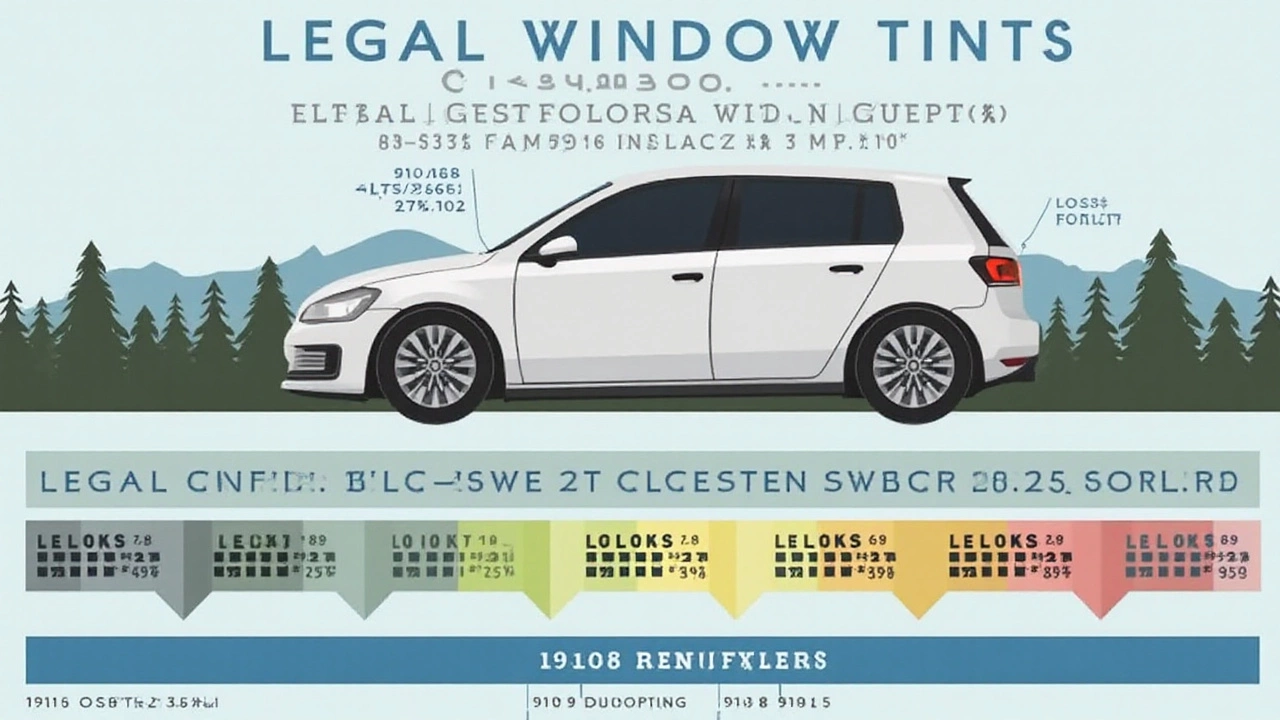
Factors Influencing Tint Fines
Fines for tint tickets in Colorado can vary significantly based on a host of factors. One of the primary considerations is the degree of window tinting applied compared to the legal limit. In Colorado, the law generally allows up to a 27% Visible Light Transmission, or VLT, which means at least 27% of outside light must be able to pass through the windows. Exceeding this limit can lead to fines that increase with the darkness of the tint. The darker the tint beyond the prescribed limit, the higher the fine could potentially be. Awareness of these specific limits is crucial for anyone considering tinting their vehicle's windows.
Another key factor that influences fines is the type of windows being tinted. Typically, the regulations regarding tinting differ between front side windows, rear side windows, and the rear windshield. For instance, front side windows usually have stricter limits compared to rear windows. Fines might be higher if front side windows are excessively tinted, as they are a primary concern for law enforcement due to visibility and safety concerns. Understanding these distinctions can be the difference between getting a ticket or enjoying a ride without any hassle.
The enforcement of tinting laws also plays a role in the variability of fines. Law enforcement officers have the discretion to assess fines based on their judgment of how much the tint affects safety. For instance, a police officer might issue a harsher penalty if they believe the tint significantly obstructs a driver's view or their ability to drive safely. Moreover, officers use specialized tools to measure the VLT of a vehicle's windows, and discrepancies between measured levels and legal levels can directly affect the financial penalties imposed.
Interestingly, previous offenses and an individual's driving record may also contribute to the amount of a tint ticket fine. Drivers who have a clean record and no prior tint violations might encounter more lenient fines as compared to repeat offenders. This approach incentivizes maintaining compliance and underscores the importance of adhering to Colorado's tinting laws. It reflects a system that rewards responsible behavior and penalizes habitual non-compliance.
"Understanding the factors that influence tint fines in Colorado is essential for motorists. Staying informed about legal limits not only helps avoid fines but also promotes safer driving conditions for everyone on the road." - Colorado Department of Transportation Officer.
Additional financial implications can arise from how a tint violation is handled. Some drivers choose to contest their fines or seek to rectify their tinting within a specified period, which can sometimes lead to reduced penalties. Knowledge of these legal nuances and rights can play a crucial role in managing outcomes effectively. Thus, staying informed is always the best strategy when it comes to navigating the legal landscape of window tinting.
Avoiding Tint-Related Penalties
Ensuring that you stay out of hot water with Colorado’s window tinting laws is less about luck and more about making informed decisions. First and foremost, familiarize yourself with the state’s legal tint limits. In Colorado, the law states that the front side windows must allow more than 27% of light in, while the back side windows and rear window can be as dark as you like. Knowing these specifics not only helps you avoid fines but also keeps your vehicle in compliance with the state’s regulations. Consistency in checking these details can save a lot of hassle. It's worth noting that different vehicles might have factory tints, so understanding your vehicle's baseline is important before adding any additional tinting.
One interesting approach to staying on the right side of the law is to use a tint meter, a little gadget that can help you check the tint percentage on your car windows. These devices can be purchased online or sometimes borrowed from local automotive repair shops. By investing in a tint meter, you can periodically check the compliance of your windows without having to rely solely on your installer or guesswork. This simple tool might just save you serious fees down the road. Additionally, working with reputable tint shops that are knowledgeable about Colorado's unique requirements can provide peace of mind. These experts often provide certifications or warranties that stand up to regulation scrutiny, acting as a buffer in uncertain situations.
Staying informed is vital. Keep an ear out for legislative changes, as window tinting laws are occasionally updated. Perhaps subscribing to automotive newsletters or following local car forums can be beneficial. They often update their members on such regulatory changes, ensuring that you’re not caught off guard. As noted by an auto industry expert, "Regularly checking vehicle equipment laws helps avoid unnecessary entanglements with law enforcement, securing both peace of mind and compliance."
Regularly checking vehicle equipment laws helps avoid unnecessary entanglements with law enforcement, securing both peace of mind and compliance.Such vigilance ensures your vehicle remains roadworthy and free from penalties.
Moreover, consider the importance of professional installation. Although do-it-yourself kits can be tempting, they often come with complications that might not align with Colorado's laws. Specially trained technicians not only deliver precise installations but also offer quotes and consultations that reflect a deep understanding of state mandates. By trusting your vehicle with professionals, you gain access to their expertise and assurance. This is particularly crucial if your tinting needs go beyond aesthetics and into areas of UV protection or privacy enhancements, where legal constraints still apply.
Finally, remember that maintaining documentation related to your window tint, such as receipts and compliance certifications, can be your best defense if you ever face scrutiny from law enforcement. These papers validate the work done on your vehicle and provide evidence of compliance in case questions arise. Pair this with regular checkups, either personal or professional, and you'll have a fortified defense against unexpected fines. By adopting these strategies and staying engaged with local auto trends, you can keep your driving experience in Colorado both stylish and within the confines of the law.
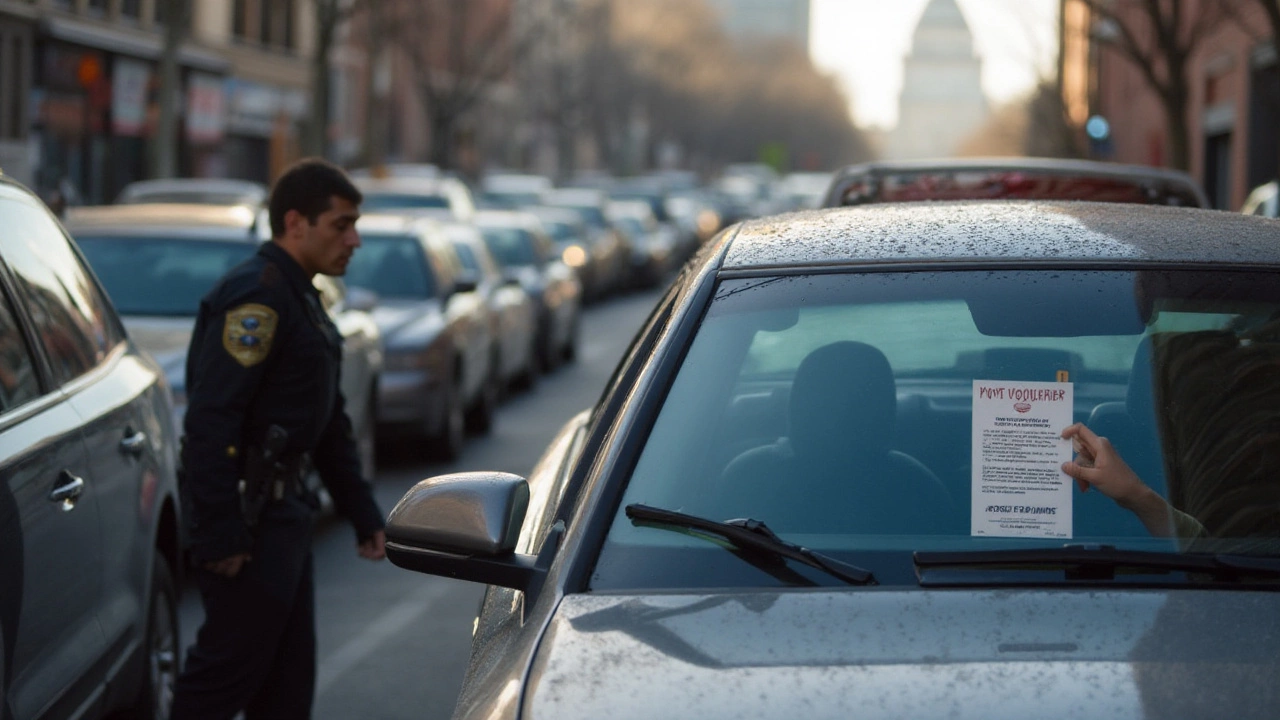
Tips for Compliant Tinting
Navigating the maze of window tinting laws can be quite the task, but with a few tips and guidelines, you can confidently keep your car looking sleek without crossing legal lines. One of the key aspects to bear in mind is the specific tint percentage allowed by law in Colorado. Knowing these percentages is crucial to avoid hefty fines. According to Colorado law, the front side windows must allow more than 27% of light in, which means using a tint film with a lower percentage of darkness is non-compliant. For the rear side and back windows, you can have a darker tint as long as you have side mirrors.
A common pitfall is forgetting about the windshield tint restrictions. In Colorado, only the top 4 inches of the windshield can be tinted. Many drivers unknowingly apply full tint or a sunstrip that doesn't comply with this requirement, which could earn them a ticket. Ensuring that your tint company is aware of and follows these rules is a proactive way to avoid any legal hassle. Always request a warranty or certificate of compliance from your installer as proof that your tint is legal by state standards, and keep this handy in your glove compartment. As the saying goes, “An ounce of prevention is worth a pound of cure.”
It's also worth noting the potential impact of medical exemptions that could apply if you're sensitive to light due to specific conditions. In such cases, Colorado law allows for more flexibility, and you may be permitted to use a darker film than typically allowed. Always keep your doctor's documentation and any additional paperwork you might need to provide.
According to the International Window Film Association, "Adhering to vehicle tint laws not only keeps drivers away from fines but also ensures safety by maintaining appropriate levels of visibility."This perspective underscores the importance of compliance, not just from a legal standpoint but also for your safety.
If you're planning a tint job, consider visiting a reputable auto shop that has a sound understanding of local laws. Having an experienced technician examine your current tint setup can provide peace of mind. They can also offer suggestions for newer, higher-quality films that not only comply with regulations but also provide added benefits, such as UV protection. Remember, a good film will not fade or bubble with time. When assessing your options, be sure to ask about the reflective qualities of the tint, as too much reflection can also attract unwarranted attention from law enforcement and could potentially lead to a citation.
One last tip is to stay updated on the ever-changing tint laws. Regulations can evolve, and what was legal a few years ago might not be compliant today. This is particularly important if you're relocating to Colorado or moving out of the state. Laws differ drastically by state, and ensuring your vehicle remains compliant will save you from unnecessary trouble. Being aware of the laws not only protects your wallet but also guarantees the safety of everyone on the road. So next time you consider modifying your vehicle’s windows, reach for both style and compliance. Your future self—and bank account—will thank you for it.

